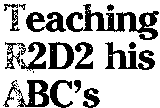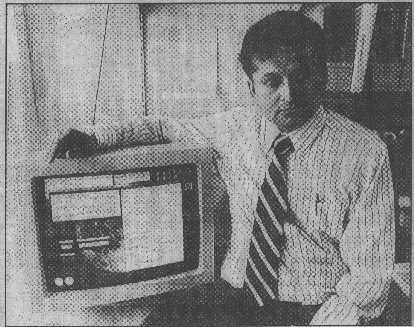


SARGUR SRIHARI: "It's going to be many, many
years before
computers can read documents such as handwritten
letter."
AMHERST, N.Y. (AP)--While computer scientists consider ways to make Americans more computer literate, a university professor is trying to make America's computers literate.
Teaching computers to read involves teaching them to think like humans--by learning from experience and making educated guesses. But what most humans learn easily at age 6 is proving far more difficult for computers.
Humans "don't just do character recognition. We don't just look at one thing." said Sargur Srihari, a professor at the State University of New York's Buffalo campus. "It's going to be many many years before computers can read documents such as handwritten letters."
For now, Srihari and his team of about 30 assistants would be satisfied if the computer could read the addresses on the envelopes those letters came in. So would the U.S. Postal Service, which is supporting their project with $2.1 million grant.
The first major problem facing Srihari's team is to find the address itself -- a simple task for humans, but bewildering for computers that must separate the address from the "noise" of other material on such things as magazine covers and junk-mail envelopes.
"The address may be partial," he said. "The ZIP code may not be fully written down or may be of poor quality. A 'Y' may have part chopped off and there may only be one bar there. But people reading it in context can tell what it is."
The SUNY computer zeroes in on text blocks with the proper shape -- those with lines flush to the left, for example -- and location to solve that problem, and has already achieved a 90 percent success rate.
Next, the computer must figure out as much of the written address as possible.
To recognize a '2' for example, a computer could be taught to look for ends in the top center and lower right, a curve in the upper right and a sharp 'V' bend in the lower left, said Alan Commike, a graduate student who is handling the number-recognition aspect of the project.
The problem is that there are so many different ways to write numerals that 130 of those rules are needed to sort them all out.
"There are twos with holes." or loops instead of points, Commike said. "There are fives with hats, fives without hats. There are British sevens and American sevens." The next step is to teach the computer to make educated guesses to fill in unreadable blanks. For example, if the street address is not entirely legible, the computer can narrow it down to a handful of possibilities by matching the part it can read against a list of all streets, and street numbers, in that particular ZIP code.
Srihari's computers can now read about 75 percent of handwritten ZIP codes; current postal equipment can only read about 5 percent of handwritten ZIP codes. But the new process is painfully slow -- up to a minute for each piece of mail.
Speeding it up will require specially designed hardware and is 18 months or more away, he said.
Eventually, Srihari said, the technology will have a wide variety of applications. For example, a busy newspaper reader could feed his paper into the computer which would cull out only those stories of interest to him, and office workers could do the same thing with memos.
Similar "Videotext" systems were never very successful. And the prediction that computers would eventually create a paperless office was wrong: if anything computers have made office even more papery.
Srihari and his project could some day give people the best of such worlds: they could have their paper and computerize it too.
"People are not going to get away from hard copy. People like to have hard copy." he said. "It's something tangible. It's nice to be able to take it somewhere."